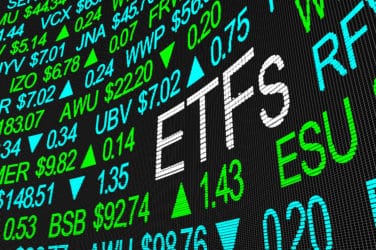
The ‘futurization’ of swaps, or the importing of constructs from the exchange-traded world into the world of OTC swaps place swap execution facilities [SEFs] at an unfair disadvantage to futures exchanges, according to some market participants.
Congress mandated via the Dodd-Frank Act that swaps be reported to a swap data repository “as soon as technologically practicable,” which the Commodity Futures Trading Commission (CFTC) has interpreted to mean that trades must take place electronically.
“The apparent CFTC position is that since trades have to be reported as soon as technologically practicable, they have to be traded electronically, which is not what Congress wrote or intended,” said Chris Ferreri, managing director at interdealer broker Icap.
Although Dodd-Frank defines a SEF as a platform on which multiple participants have the ability to trade swaps by accepting bids and offers made by multiple participants, “through any means of interstate commerce,” the CFTC’s proposed SEF rules have focused solely on electronic platforms and request-for-quote (RFQ) systems.
Under new margin requirements adopted by the CFTC, a derivatives clearing organization (DCO) would be required to specify margin requirements to cover a liquidation period of five days in order to cover the DCO’s potential future exposures during the interval between the last collection of variation margin and the time within which the DCO could liquidate the defaulting clearing member’s position.
Thus, in the event that a futures contract is converted to a swap, this would result in the DCO margining such swap contracts using a minimum of five days instead of one day for futures.
The rules should be rewritten so that margin is calculated based on actual trading liquidity and other market data, not on whether an instrument is labeled a swap or future, said Ferreri.
“It is troubling that futures exchanges are touting the lower margin cost for swap futures over swaps and are comparing futures to the pre-Dodd Frank era of swaps and not the post-Dodd Frank era,” Ferreri said. “Even if futurization is possible in some products because of migration to more continuous trading of order books, it still begs the question why greater liquidity must move to order books operated by single-silo exchanges with non-fungible products.”
As the Commodity Futures Trading Commission moves toward adoption of a final swap execution facility (SEF) rule, buy-side firms are worried that the rule will be overly restrictive and thus defeat the goals of transparency and systemic risk reduction envisioned by the Dodd-Frank Act.
“SEFs can and should flourish, if we get the regulatory structure right,” said Robert Pickel, chief executive of the International Swaps and Derivatives Association, in a blog posting. “Rigid requirements with no demonstration of benefits, such as minimum quote requirements, will only weigh down these innovative offerings.”
Icap has launched an electronic interest rate derivatives platform in the U.S. for trading U.S. dollar interest rate swaps, with streaming prices available from BofA Merrill Lynch, Citi, Deutsche Bank and JPMorgan.
The platform, called i-Swap USD, follows the launch of its European counterpart, i-Swap for Euro IRS.
Once the final rules associated with running a swap execution facility (SEF) arising from the Dodd-Frank Act are published by the CFTC, i-Swap USD intends to register as a SEF and operate in compliance with the rules and regulations.
“The ability to shift between electronic and voice trading is the hallmark of the OTC market,” said Ferreri. “Over the years, we have learned that some products lend themselves to either voice or electronic trading, while others lend themselves to both using a hybrid system.”
In times of market stress, “most market participants are reluctant to post prices because of uncertainty about market direction,” he said. “As a result, they tend to migrate back to a voice broker.”






